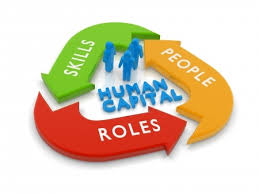Today the momentum for human analytics is growing but its potential is unrealized. While many HR Departments use metrics today, their use and application are:
- Often inconsistent; different companies employ different kinds of metrics in different ways
- Data is collected for the sake of collection or to justify some activity
- Metrics are out there by themselves, and are not tied to business performance or adequately aligned with organizational strategies
The reasons why analytics are not being more widely used are many, including gaps in stakeholder perspectives. Barriers to fully realizing analytics are:
• Investors pressure companies to meet short-term earnings rather than long-term milestones. Human
capital analytics and its predictive business value is not one of their traditional tools.
• HR has not yet reached the level where it can consistently and quantitatively demonstrate linkage to
value creation, causing many CEOs and CFO’s to view HR skeptically as a simply a cost-centre.
• This barrier is enhanced through differences between industry and organizational size.
The knowledge and experience is often lacking to turn metrics into analytics and analytics into strategies.
• Organizational cultures that foster silos inhibit using human capital analytics. Often data related to
human capital is disconnected from business operations, so the data is not integrated, and relationships
between people and business measures are not connected. Silos create gaps because managers focus on
their own area of control. Manufacturing departments report production output; HR reports people data.
• Lack of standardization of definitions, terminologies, and formulaic elements make metrics different
from one organization to other, and makes it difficult to build on generalizable knowledge beyond one’s
Organization.
•Regulatory and Financial requirements for valuing human capital do not currently exist.
•Whether standards should be pushed upon business and HR by regulators or pulled by demand is a key
question. (FASB, etc) Many believe regulation would be a good thing for HR because if human capital
investments such as training were treated as line-item investments, instead of costs, then investor
communities would see HC as the value driver it is.
•Metrics are often non-linear. Metrics are messy and sometimes composed of soft elements (Shared
valued, skills, style, staff) and can be ambiguous and hard to quantify.
While there are challenges to be met, much can be done to operationalize human capital data.
–Conceptualize metrics in three ways:
- Efficiency Metrics
- Effectiveness Metrics
- Predictive Metrics
– HR facilitates the process to involve managers about what metrics are relevant. These are metrics the
organization and managers own; not HR.
– Fewer metrics are better than more metrics
– Simpler is better than complicated
– Usually better to pilot a project with a smaller, human capital supportive/friendly department in your
Organization.
•Efficiency Measures
– Often we over-report efficiency measures because it’s easy
– Cost-per-hire, time-to-fill, number of training hours, HR Costs
• Effectiveness Measures
– Demonstrates how HR practices/measures relate to firm performance
– For example, increased productivity by RsX by lowering time-to-fill, lowered legal fees by RsX for
sexual harassment complaints through mandatory harassment training.
– Increase productivity by lowering voluntary turnover through key HR initiatives:
- Management training class.
- Team-building for areas where turnover was higher.
- Improved communication about how to utilize HR Services.





9 Comments. Leave new
Explained well
Well explained
articulate article.
Well explained!
Very informative.
Well Structured article 😀
Nice points 😀
The points and all content were good 😀
well explained
Well presented
very well written 🙂
precise and crisp
to the point ! 🙂